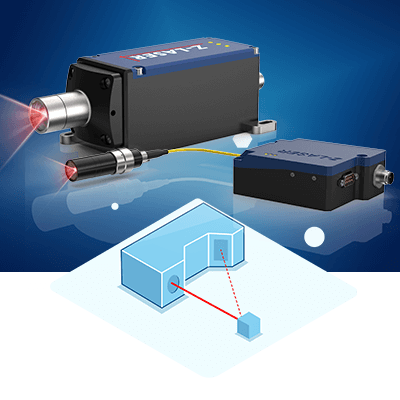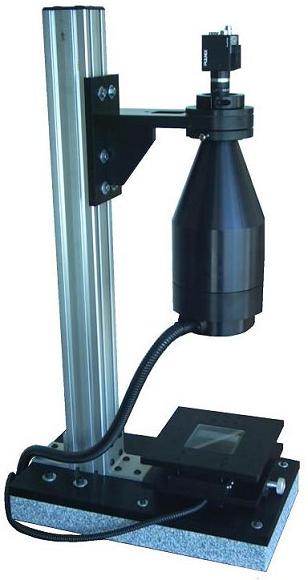How aerospace companies rely on optical measurement systems for critical component inspection
How aerospace companies rely on optical measurement systems for critical component inspection
Blog Article
The Role of Optical Measurement Systems ahead of time Metrology Strategies
Optical measurement systems have actually transformed metrology, bringing a degree of accuracy that was when inconceivable. As you discover additionally, you'll discover how these systems are forming the future of measurement and top quality control.
The Evolution of Assessment: A Historical Perspective
As you check out the history of width, you'll discover that its advancement shows humankind's pursuit for precision and standardization. From old human beings utilizing body parts as systems of dimension to the development of standard weights and measures, each action reveals our desire for accuracy. The Egyptians developed the pyramids making use of specific dimensions, while the Romans progressed engineering with their sophisticated measuring devices.
Throughout the Renaissance, clinical breakthroughs shifted the focus toward more empirical techniques, leading the way for modern assessment. The introduction of the statistics system in the late 18th century marked a considerable landmark, establishing universal criteria. Throughout the 20th century, technical advancements additionally changed metrology, allowing extremely accurate measurements in different fields.
Today, width remains to evolve, incorporating digital modern technology and automation. This background highlights not simply the significance of measurement yet additionally our unrelenting pursuit of improving accuracy and consistency in our progressively complicated globe.
Principles of Optical Measurement Systems
Comprehending the principles behind optical dimension systems is essential for accurate outcomes in metrology. You'll want to take into consideration essential optical concepts, measurement precision factors, and efficient system calibration methods. Each of these components plays an important duty in guaranteeing your dimensions are precise and trustworthy.
Basic Optical Concepts
While exploring optical measurement systems, you'll run into essential optical concepts that form the backbone of accurate information purchase. Light behaves in foreseeable means, and recognizing these behaviors-- like reflection, refraction, and diffraction-- is vital for effective measurements. By understanding these concepts, you'll be furnished to leverage optical innovations efficiently, leading the method for innovations in assessment and guaranteeing your dimensions are both trustworthy and repeatable.
Measurement Precision Elements
To attain high dimension precision in optical systems, numerous aspects come into play, affecting the reliability of your results. High-quality lenses and detectors decrease aberrations and noise, ensuring your measurements are exact. By attending to these aspects, you can enhance the general efficiency of your optical dimension systems, leading to even more reliable and exact outcomes in your metrology applications.
System Calibration Strategies
Achieving high dimension precision is only component of the equation; appropriate system calibration techniques are just as vital in optical measurement systems. Next off, use well-known measurements to verify the system's output and make needed improvements. With these methods, you'll enhance the reliability of your optical measurement system.
Key Technologies Behind Optical Measurement
Optical dimension systems rely upon numerous crucial technologies that boost accuracy and performance in metrology. One crucial modern technology is interferometry, which uses the disturbance of light waves to determine small variations and surface area irregularities with severe precision. You'll likewise discover laser scanning systems, which capture thorough 3D data of items promptly, making them vital for dimensional analysis.
Furthermore, CCD and CMOS sensors play a significant duty in transforming light right into electric signals, enabling high-resolution imaging and accurate measurements. Advanced formulas for picture handling additionally enhance dimension accuracy by examining information in actual time, filtering out sound and boosting attributes.
Finally, optical fiber provide flexibility and the capability to determine in difficult atmospheres while maintaining signal honesty. By leveraging these modern technologies, you can accomplish exceptional cause your assessment jobs, guaranteeing that your measurements are both trusted and exact.
Applications of Optical Dimension in Sector
As industries progressively demand precision and efficiency, the applications of optical measurement systems have become crucial across various markets. In manufacturing, these systems assist you keep track of measurements and tolerances in real-time, making certain quality assurance without time-consuming manual checks. In the auto industry, optical dimensions aid in straightening parts with accuracy, enhancing safety and efficiency.
In electronics, you're making use of optical approaches to evaluate minute functions on circuit card, spotting issues that might lead to failings. The aerospace market advantages from non-destructive screening techniques, enabling you to examine products and components without jeopardizing their honesty.
Optical dimension likewise plays a crucial role in textiles, making sure fabric dimensions fulfill exact requirements. optical measurement system. With their capacity to offer high-resolution data promptly, these systems encourage you to make informed decisions, enhance processes, and ultimately drive technology across your sector
Enhancing Accuracy and Effectiveness in Dimensions
When you think of enhancing precision in dimensions, accuracy in your dimension methods is essential. By streamlining these processes, you can accomplish quicker results without compromising quality. Allow's check out exactly how adopting advanced optical measurement systems can raise both precision and effectiveness in your work.
Accuracy in Measurement Techniques
Precision in measurement methods is crucial for accomplishing reliable results in assessment, particularly because tiny disparities can lead to significant mistakes. By utilizing innovative optical dimension systems, you can boost the precision of your dimensions. In addition, exact dimensions enable you to preserve top quality control, guaranteeing that products meet stringent specifications.
Enhancing Dimension Processes
To enhance accuracy and effectiveness in dimensions, enhancing your dimension processes is necessary. Start by taking on optical dimension systems that supply real-time data, lowering the moment invested in hands-on recording. These systems typically incorporate flawlessly with existing software, enabling you to automate information collection and evaluation.
Next, standardize your measurement protocols. By implementing regular treatments, you reduce irregularity and boost repeatability. Don't forget to routinely calibrate your equipment to assure its accuracy.

The Effect of Optical Dimension on R & D
As researchers venture to press the borders of advancement, optical measurement systems have ended up being vital tools in the growth process. These systems offer you with exact, real-time information that improves your capacity to assess complex materials and structures. In numerous areas, from biotechnology to aerospace, you rely upon optical measurements to boost and optimize designs item performance.

With high-resolution imaging and non-contact methods, you can reduce sample disturbance, permitting for more exact outcomes. This capacity to catch minute details accelerates your R&D cycle, allowing you iterate designs rapidly and effectively. In addition, optical dimension promotes cooperation across disciplines, as the data created is frequently quickly interpretable and shareable.
Ultimately, integrating optical measurement systems right into your research study not only improves performance however also deepens your understanding of the sensations you research. By leveraging these innovative methods, you're better equipped to innovate and stay in advance in a competitive landscape.
Future Trends in Optical Dimension Equipments
With the quick improvement of innovation, you're most likely to see considerable changes in optical measurement systems that will certainly redefine their application throughout various industries. You'll notice an approach increased automation and combination of expert system, enabling real-time data evaluation and boosted accuracy. Miniaturization is one more pattern; small tools will certainly allow measurements in tighter spaces, making them suitable for areas like aerospace and biomedical applications.
Moreover, the arrival of advanced products, such as photonic crystals, will boost sensitivity and resolution. Anticipate to see systems that can operate in tough environments, supplying reputable dimensions in extreme conditions. Cloud-based analytics will certainly likewise play a vital function, offering you accessibility to big datasets for far better decision-making. As these modern technologies assemble, you'll locate that optical about his measurement systems not just enhance precision however additionally improve process, inevitably driving development and effectiveness in your tasks.
Often Asked Concerns
Exactly How Do Optical Measurement Solutions Contrast to Typical Dimension Techniques?
Optical dimension systems use greater accuracy and faster outcomes compared to standard methods. You'll discover they catch more data factors properly, lowering human mistake and raising integrity, making them a favored option in different applications.
What Industries Benefit Most From Optical Measurement Equipments?
You'll locate markets like aerospace, automobile, and electronics benefit most from optical dimension systems. These fields depend on accurate dimensions to ensure quality and performance, boosting efficiency and minimizing expenses through advanced modern technology.

Are Optical Measurement Equipments Expensive to Carry Out?
Optical measurement systems can be costly to implement, however their accuracy and effectiveness often warrant the cost. Spending in such modern technology can cause significant long-lasting financial savings and enhancements in quality throughout various applications.
What Abilities Are Called For to Operate Optical Measurement Equipments?
To operate optical measurement systems, you'll require strong analytical skills, focus to detail, and efficiency in software program tools. Experience with optics and an understanding of dimension concepts will also boost your effectiveness and effectiveness.
Exactly How Do Ecological Variables Impact Optical Measurements?
Ecological variables like air, humidity, and temperature quality can distort optical measurements. You'll observe variants in precision as great site a result of light disturbance or refraction. optical measurement. Preserving steady conditions is crucial for accurate and trustworthy optical dimension outcomes
Verdict
In recap, optical measurement systems are revolutionizing width by giving unmatched precision and performance. By using advanced principles and technologies, these systems enhance accuracy while decreasing disruptions in numerous sectors. As you discover future patterns, you'll see exactly how the integration of AI and automation will proceed to boost dimension methods, driving innovation and improving quality assurance. Welcoming these innovations will useful source certainly be important for staying affordable and attaining quality in your area.
Accomplishing high measurement precision is only part of the formula; appropriate system calibration techniques are just as important in optical dimension systems.When you think concerning improving precision in measurements, precision in your measurement methods is vital. By making use of sophisticated optical measurement systems, you can boost the accuracy of your measurements.To improve precision and performance in measurements, streamlining your dimension processes is crucial. Exactly How Do Optical Dimension Systems Contrast to Standard Measurement Techniques?
Report this page